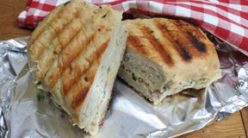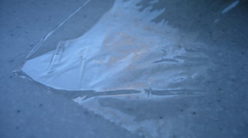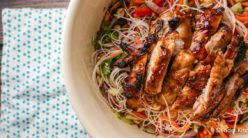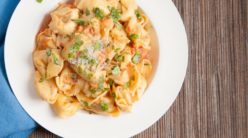[ad_1]
French cooking through history will take you back, not to the Deluge (the great floods), but to the time when France was owned by the Gauls. I believe you will find this gastronomical journey interesting and amusing. The present grandeur of France might be contested by some. The greatness of her cooking and her wit is not contested by anyone. I will begin this article by an aphorism by Brillat Savarin -lawyer, epicure and gastronome (1755-1826) "The destiny of nations depends on the manner with which they feed themselves.The people have the cuisine which they deserve." If he is right, France still has a beautiful future ahead. The Gauls found wild boars, mushrooms and snails in the dense forests that covered France, then called Gaule (82 BC – 42BC.) They raised poultry, geese and semi-wild pigs. This formed the basis of their essential carnivorous diet. As far as snail were concerned, they consumed them grilled, directly in the shell and as a dessert. Under the oak trees, in certain spots, and with the help of pigs, they found truffles and cooked them buried in ash. Pork, the foundation of French cooking, played a great role and is still a l'honneur.
Let's return to pork, which the Gauls called bacon, word we find in Anglo-Saxon languages. The Gauls were expert in curing. You must add the fish found in the rivers and on the coasts, and oysters rolled out of the Atlantic, with which the Gauls had a successful commerce with Rome, long before the request of Gaul by Julius Cesar. These details come from Julius Cesar's De Bello Gallico which supplies us with so many details of the Gauls' life and customs. The Gallo-Roman period covers about 500 years and was a prosperous era. With the Roman peace, the conquerors welcomed bread and wine, vital elements of French cuisine, in addition to onions and peppers. The Gauls bought charcuterie (pork meats and pork cold cuts of many kinds) and curing and preservation processes of which they had become masters.)
Alas, invasions by the Barbarian hordes put culinary preoccupations away from the Gauls' first priorities. The Barbarians bought nothing with them, in fact, they seemed to have a definite tendency to take things away! Let's salute Charlemagne in passing (768-814.) He was a fervent amateur of roasted meat on the spit, and he discovers Brie cheese in an abbey in St. Louis. Germain. He promptly encouraged its fabrication. He also encouraged plants of orchards and vineyards, and the raising of fish. Let's mention that it is Charlemagne who was the first to admit ladies at the table during the feasts. Ladies, let us have a grateful thought to Charlemagne.
The Middle Ages present a mixture of feasts and famines. The great feasts primarily consist of meat and game. (The first cookbook on record was actually called Le Viandier. Viande is the French word for meat. That manuscript was written before 1380 by Guillaume Taillevent, Head of Charles IV Royal Kitchen, and it is kept in France's National Archives. time ate very few vegetables because conservation was a big problem. This was a primary cause of famines especially as far as meat was concerned. prized. There was no sugar and bittersweet (aigre-doux) was used instead. Bittersweet has fallen out of favor in today's cooking.
It would not be gastronomically correct to mention here the famines that casts shadows on the Middle Ages. However, in the quest for anything to eat, many vegetables, roots and herbs were discovered and improved. And let us not forget frogs and snails, forgotten since the gallo-roman period and which reappeared. That is what famines brought to gastronomy.
An important development: Spices and rice brought back by the Crusaders.
This is the end of this article. The next article will take you to the Renaissance and beyond.
[ad_2]
Source by Francine Fuqua





